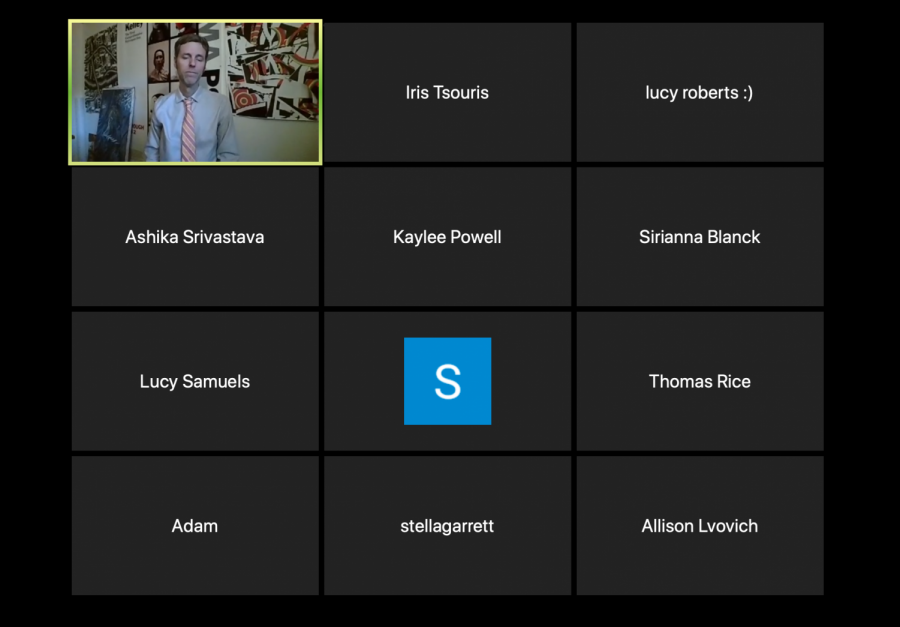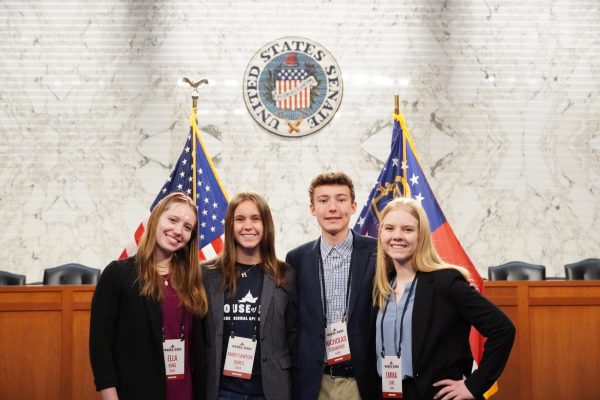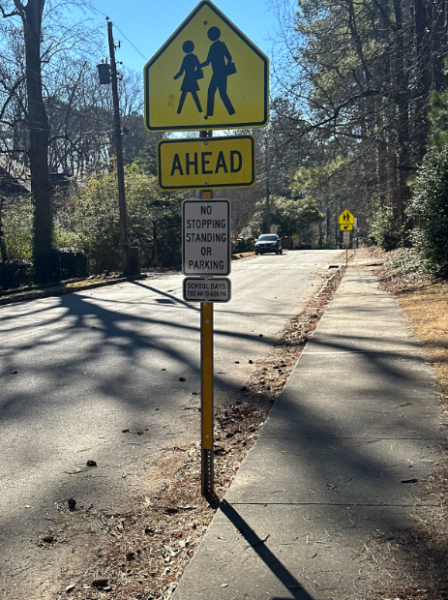The Faceless Classroom: Students Prefer Webcams off, Survey Reports
English teacher Fred Avett is surrounded by a sea of faceless students.
“I think I have a total of three students who turn their cameras on regularly out of 150 kids or so,” said history teacher Samantha Gilliam.
With the implementation of virtual school, this is becoming an increasing phenomenon. This year, student-teacher interaction is limited to cameras, microphones, and chatboxes (depending on the teacher or platform)—yet most students do not turn on their cameras when in class.
A survey was sent out to different classes at Chamblee. 100 students responded, sharing their reasons for keeping their cameras on or off, why they choose this option, and other camera-related issues in an online school environment.
Of the 100 students surveyed, 22% turn their camera on for at least one class period, a large minority in the survey. The only time the majority of students (60%) turn their cameras on is in private online meetings.
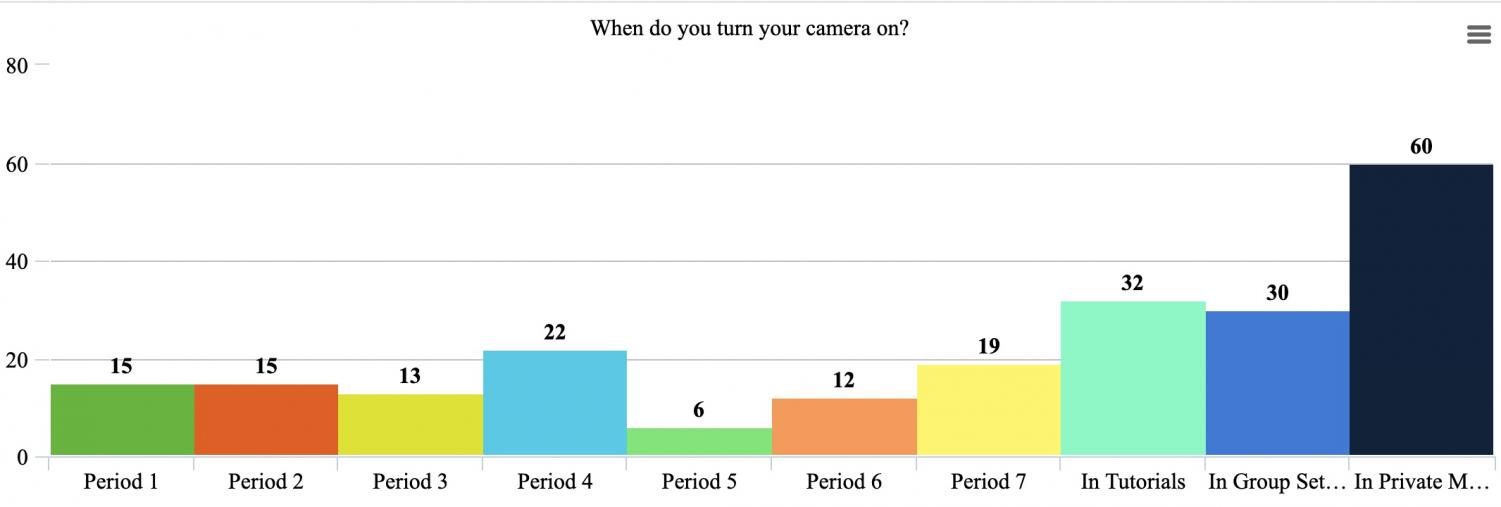
Teachers are technically not allowed to mandate cameras, but many expect cameras to be on, especially for presentations. 63% of students say they put their camera on when required by a teacher.
“My Weight Training teacher makes us put our cameras on since it’s kind of hard being a PE teacher without having a gym. He’ll make us present certain workouts, so we turn our cameras on for that, and we don’t really have a choice,” said junior Jordan Fleming. “For Spanish, if you’re presenting something [Señora Rodriguez might] let you get away with sometimes just turning on your mic.”
Students have ranging reasons for why they decide to keep their cameras off. From potential anxiety to varying household environments, many students find the school day easier without constantly having a camera trained on them. Others take advantage of the fact that there is no enforced camera-mandate in DeKalb County.
“[Teachers] can’t dictate what we do without cameras. If they did, it would honestly be kind of creepy. We literally just don’t have to, so why do it anyway?” said junior Kristina Perez. “With Señora Anderson, I’ll put my camera on for a split second, but because my parents walk and talk around [me], I don’t really like to keep it on.”
Art teacher Mattie Bell is open-minded when it comes to her students and their decisions surrounding camera usage.
“I understand why some students don’t want to turn their cameras on because I know everybody’s home situation is different. We’re all calling in from home, and some people are surrounded by a lot of people, and some people don’t really have a quiet area in place in their house,” said Bell.
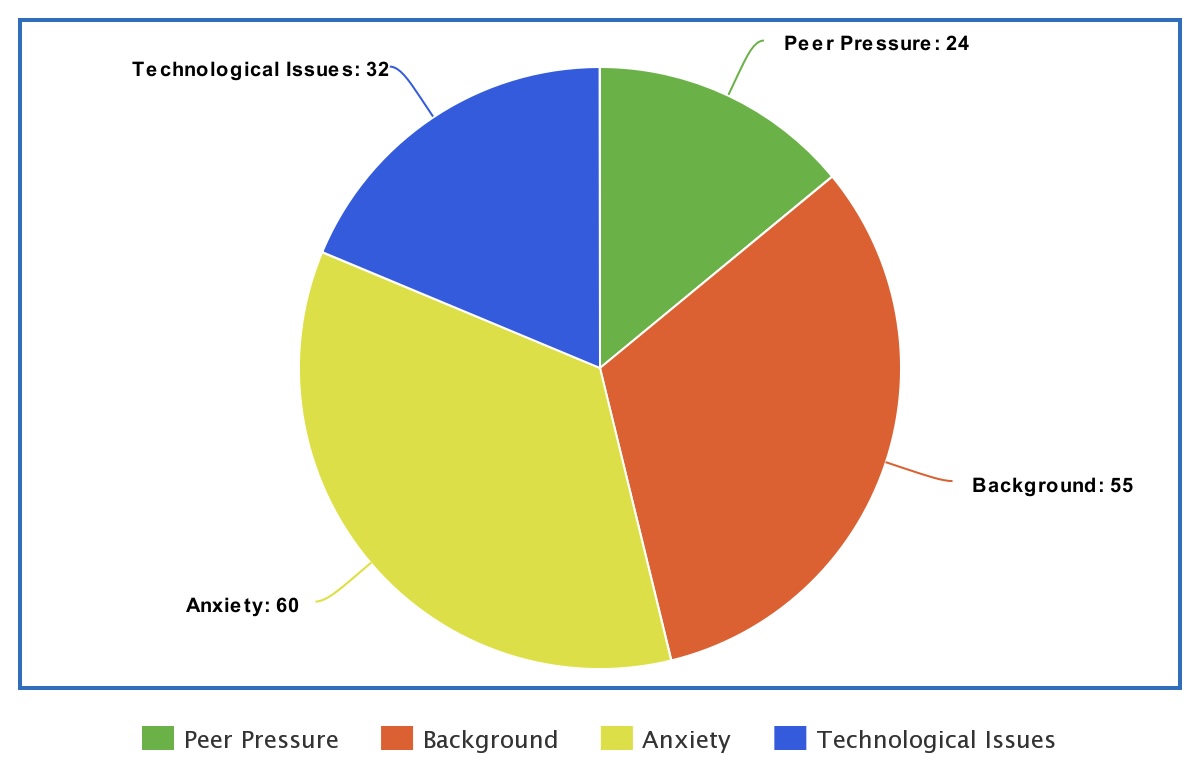
Many students struggle with appearance-based anxiety and mental health struggles, with anxiety being the leading reason for students having their camera off. Others simply find themselves uncomfortable showing their face. Now with the ability to avoid dressing up for school and looking presentable, students are taking advantage of this new circumstance.
“Having my camera off makes me more comfortable because the thought of other people staring at me makes me actively uncomfortable and makes it harder for me to focus and think about school, […] because that’s an extra thing I’m worrying about. But when my camera’s off, I’m not worrying about that, and I can just pay attention to what’s going on,” said junior Lou Mayer.
Other students prefer being able to wear cozy pajamas and ignore the social norms of clothing.
“I don’t think it really matters. It’s all on me for what I do. I don’t have to worry about my physical appearance which is nice, and I can just wake up and come to class in really just my pajamas,” said Perez.
Another massive setback for students is an unstable internet connection. Audio issues and other technological glitches can be frustrating for students like Mayer, which are often exasperated when cameras are on.
“A lot of people don’t have internet that works [for having] your camera on for all classes. If I turn my camera on, because I’m far away from the Wi-Fi, then it glitches the audio when I already have issues hearing,” said Mayer. “Teachers have to understand that not every student can [turn their cameras on].”
32% of students don’t turn their cameras on due to technical issues according to the survey. The peer pressure involving camera usage is an additional challenge Chamblee students are facing this year.
“I feel like peer pressure can make most people turn their cameras on, and then there are the select few who don’t really give in to that pressure. I think a lack of cameras on can get rid of some parts of peer pressure due to the fact that a lot of people feel comfortable being the majority […] which is usually people with their cameras off.” said Perez
Peer pressure, for some, might dictate camera usage—but not everyone agrees.
“I don’t think peer pressure plays a big role in people choosing to have [their camera] off or on. I know some people who, if they want to have them on, will just do it anyway and even if they’re the only person in the class that does it, they’re fine with that,” said Mayer. “I think most people who are comfortable enough to have a camera on would be okay being in the minority with that.”
Of the students surveyed, 24% said they didn’t turn on their cameras due to feelings of peer pressure.
However, virtual school is not just a struggle for students. Many teachers feel isolated in their classes, experiencing impaired human connection while teaching a class of digital icons instead of faces.
“It’s a lonely experience teaching [ with cameras off], whereas with their cameras on, I can see them. There’s this kind of human connection happening. I can see facial expressions and reactions and things of that nature. So [I feel] empty and sad when they’re off [and] relieved and excited, because I’m not lonely and sad, when they’re on,” said English teacher Zachary Welser.
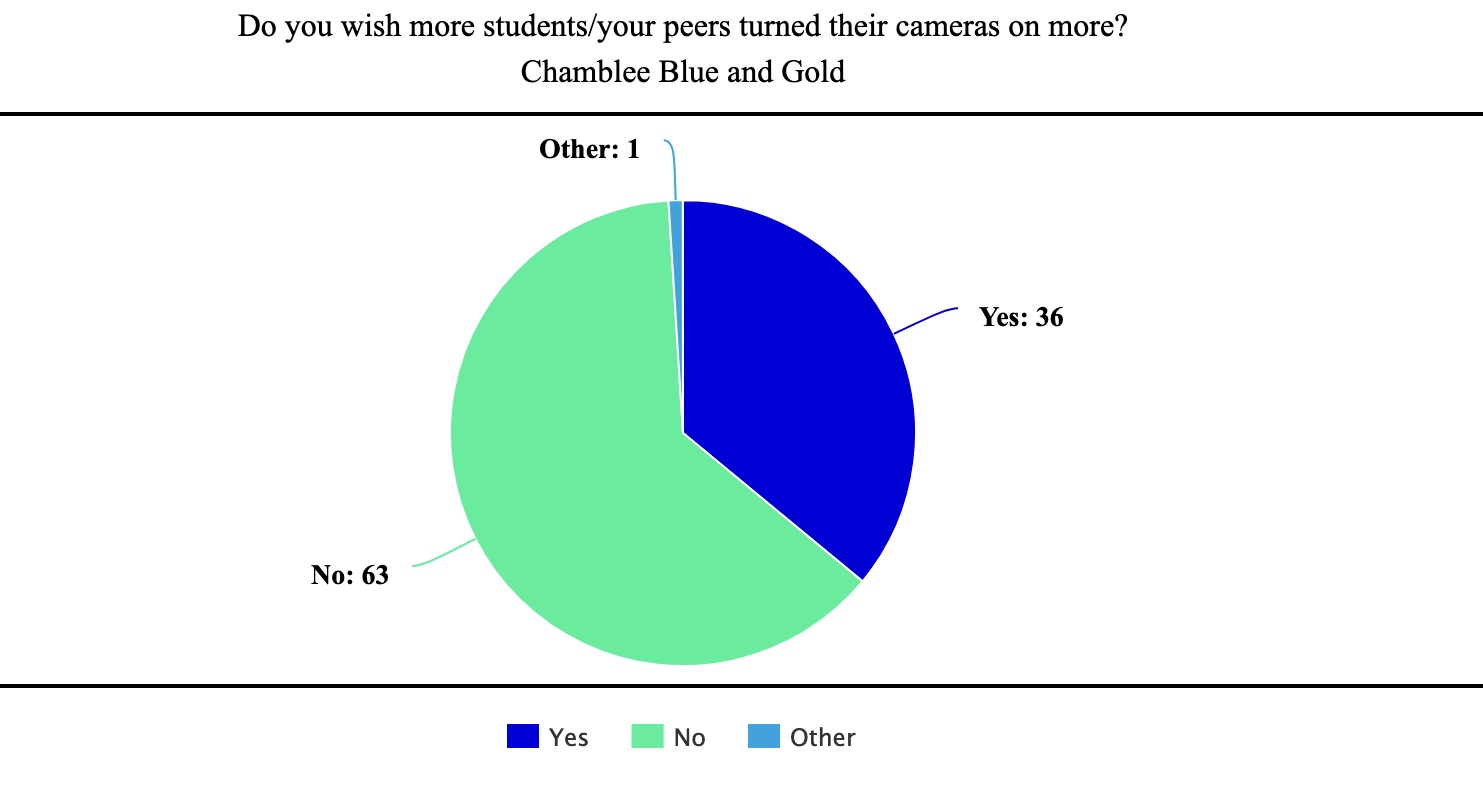
36% of students evidently agree with Welser: they too wish more students would turn on their cameras in class.
“I like to see others with their cameras, I guess. It feels more like a classroom,” said Perez.
Some teachers, however, are adjusting to their camera-less classes, especially when they themselves do not feel comfortable in large group calls.
“I kind of evolved a little bit on [the cameras]. When we first started virtual learning this year, I knew that there would be kids who would be uncomfortable with showing their background, and so I kind of had that in mind, and it bothered me at first to talk to a bunch of names on the screen,” said Gilliam. “But I don’t care: it’s whatever you guys feel comfortable with. I know I don’t feel comfortable having my screen on if I’m in a faculty meeting with 200 people, so I don’t think that’s unusual.”
Other teachers feel that it depends on the situation. For example, a group discussion might warrant an active webcam. But when screen-sharing or giving instructions, camera usage is nonessential.
“I think I would always prefer to see everyone because you don’t feel like you’re talking to like an abyss of little round dots,” said Bell. “But, at the same time […], we’re doing such a variety of things. If we’re having a discussion or something then it’s really nice to see people […]. If I’m presenting like a new project or an AP Art History slide, […] I’m not really paying attention to the cameras as much.”
Without this form of interaction, many teachers have found other ways to reach out to students and create relationships built on trust.
“I am just trusting my kids to do as much as they can. I’m not going to be a big arbiter of whether or not you’re going to do what you’re supposed to do. You know what you’re supposed to do,” said Gilliam. “I don’t think anybody in high school was confused about what their responsibility is when it comes to schoolwork. So if I got [a student] who’s going to put me on a zoom meeting [in the background], and then they’re going to go play, is that going to show up in their grade? Yeah, [it will].”
While both students and teachers struggle with virtual schooling, others argue that the rise of virtual school has created accessibility. When not using a camera, teachers cannot form any biases or opinions on a student based on their appearance, mannerisms, or surrounding personal items that could reveal personal identities.
“I do think that [not using a camera] can help avoid bias and discrimination. In my room, I have multiple flags relating to my sexuality. I can [display these flags] in my room because that’s my personal space, but I may not be comfortable with everyone focusing on that aspect of me [during class],” said Mayer. “I do think it can help because you never really know what opinions anyone has or if someone, even a teacher, could be discriminatory in some way.”
Chamblee is not alone in its online struggles. Much of the country is either in hybrid or online classes. This leaves many unprepared and nervous about the future of online schooling.
“All of the teachers want to teach. We want to be here, and none of us signed up to be an online teacher. None of us have that kind of certificate. None of us have taken classes for it. So we’re all really just hoping for the best, doing our best. There’s a lot of feelings of anxiety and insecurity that comes along with that,” said Welser. “It’s kind of like being a first-year teacher all over again in a whole new world, and now it’s a world where you’re speaking into the void.”
Your donation will support the student journalists of Chamblee High School Blue & Gold. Your contribution will allow us to print editions of our work and cover our annual website hosting costs. Currently, we are working to fund a Halloween satire edition.
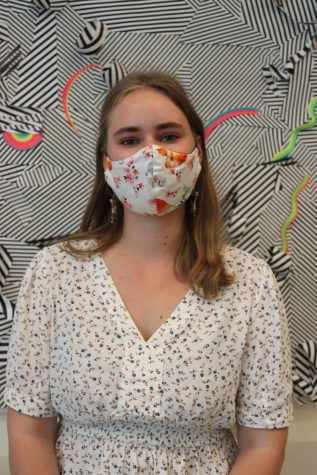
Sirianna Blanck is a senior and editor-in-chief of the Blue & Gold. She has a strong cat obsession. In five years, she hopes to be fighting for environmental change. Her Chamblee experience has been akin to "Alice’s Adventures in Wonderland."

Lucy Samuels is a senior and has been working as a staff writer for two years. She sees herself in five years working for some sort of video game company. The show that represents high school to her is "Game of Thrones."

